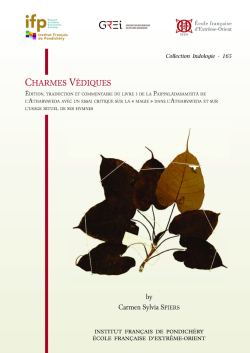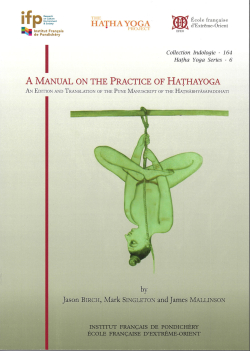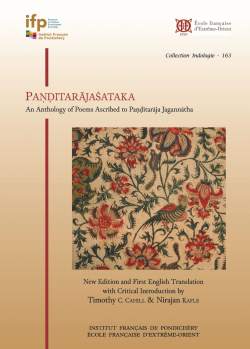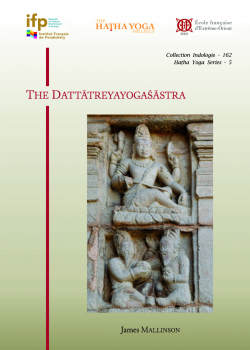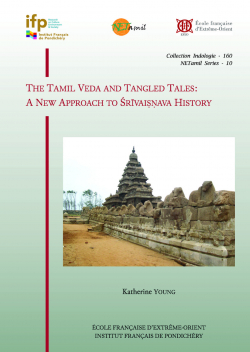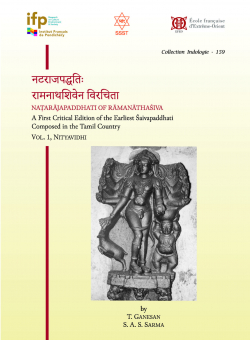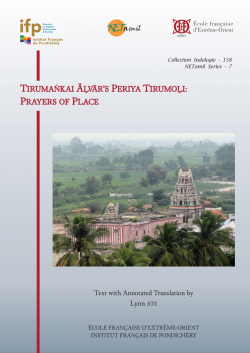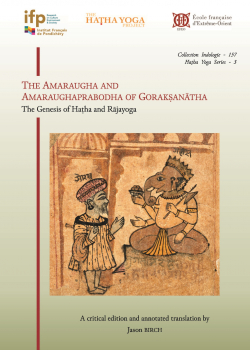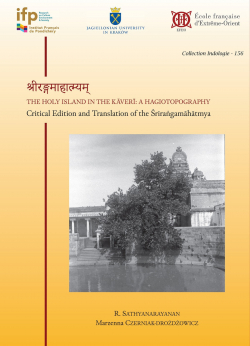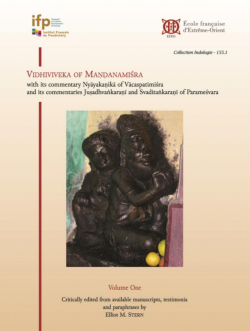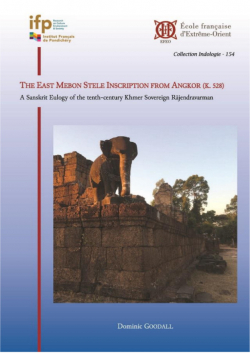The catalog of EFEO Publications includes works on a wide range of disciplines in the humanities and social sciences (archaeology, history, anthropology, literature, philology, etc.), centered on Asia, from India to Japan.
These publications address both specialists, and a wider public interested in Asian civilizations and societies.
The Vaiyākaraṇasiddhāntabhūṣaṇa of Kauṇḍabhaṭṭa
with the Nirañjanī commentary by Ramyatna Shukla and Prakāśa explanatory notes by K.V. Ramakrishnamacharyulu. Part III
Collection : Collection Indologie
Collection's number: 149
Edition: EFEO, Institut français de Pondichéry (IFP)
Publication date: 2021
Status : Available
45,00 €
ISBN-13 : 9782855392448
ISSN : 0073-8352
Width : 17.5 cm
Height : 24.5 cm
Weight : 1.18 kg
Number of pages : 580
Distributor : EFEO Diffusion, EFEO Pondichéry Contact : shanti@efeo-pondicherry.org
Geography : India
Language : Sanskrit
Place : Pondichéry
Support : Papier
Description :
XXXIII+547 p.
Collection Indologie n˚149
Shree Somnath Sanskrit University Shastra Grantha series n˚ 7
Abstract
The Vaiyākaraṇasiddhāntabhūṣaṇa, also known as the Vaiyākaraṇabhūṣaṇa, is a commentary on the great 17th-century grammarian Bhaṭṭoji Dīkṣita’s Vaiyākaraṇamatonmajjana, written by Bhaṭṭọji’s nephew Kauṇḍabhaṭṭa. It is one of the most important texts of the late Pāṇinian grammatical tradition on questions of semantics. The main intention of Kauṇḍabhaṭṭa’s commentary is to refute objections raised by proponents of the two rival systems of Logic (Nyāya) and Exegesis (Mīmāṃsā) on various aspects of semantics, and to establish the Grammarians’ views on these subjects. The Vaiyākaraṇasiddhāntabhūṣaṇasāra, an abridged version of the Vaiyākaraṇabhūṣaṇa by the same author, is a popular work that was commented upon more than ten times. On the other hand, nobody so far has attempted to write a commentary on the Vaiyākaraṇabhūṣaṇa itself. The present work contains the Vaiyākaraṇabhūṣaṇa along with a commentary called Nirañjanī by Pandit Ramyatna Shukla and explanatory notes (Prakāśa) by the editor. The edition was prepared by taking a 17th-century manuscript as a basis, and by comparing it with forty manuscripts from different parts of India, as well as with all four published versions, none of which can be regarded as a truly critical edition. The present volume contains the third part of the work, discussing the meaning of Sanskrit compounds (samāsas).
Notes
You can also order this title with our Pondicherry center at the following address:
shanti@efeo-pondicherry.org
Or with the French Institute of Pondicherry at the following address:
library@ifpindia.org
Orders to India must be placed with our center in Pondicherry or the French Institute of Pondicherry.

